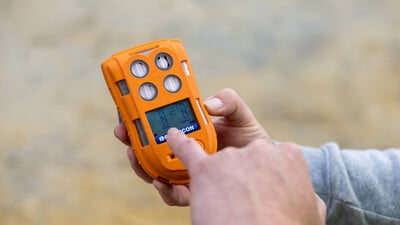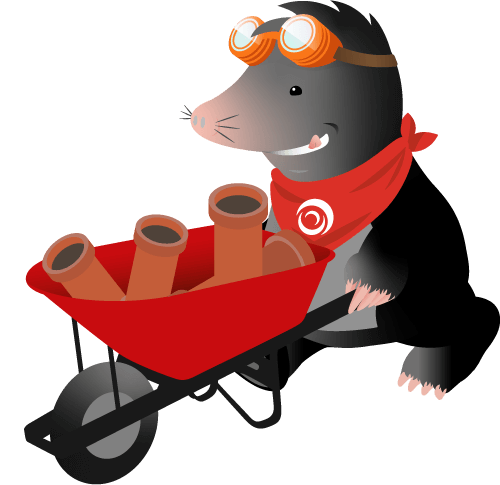Understanding Confined Spaces as a Work Environment
Confined spaces are enclosed or partially enclosed areas that pose significant risks due to limited access, poor ventilation and potential exposure to hazardous substances. These environments are common across various industries, particularly in sewage management, stormwater drainage and utilities such as gas, electricity and telecoms.
Examples of confined spaces include underground pipes, culverts, manholes, inspection chambers, storage tanks, silos, tunnels and enclosed basements. Workers entering these spaces often face challenges related to air quality, structural integrity and the risk of entrapment. Given the dangers involved, strict safety measures and specialised equipment are necessary to protect those working in such conditions.
The Dangers of Working in Confined Spaces
The risks associated with confined spaces are numerous and can be fatal if not properly managed. One of the primary dangers is asphyxiation due to a lack of oxygen or the presence of harmful gases such as methane, carbon monoxide or hydrogen sulphide. Without adequate ventilation, toxic gases can accumulate quickly, posing an immediate threat to life.
Other hazards include engulfment in liquids or loose materials, fire and explosions due to flammable gases, and physical injury from falling debris or collapsing structures. In the case of underground pipes and chambers, workers may also encounter biological hazards, such as bacteria and viruses from sewage, or extreme temperatures that can cause heat stress or hypothermia.
Essential Safety Gear for Confined Space Entry
Ensuring safety in confined spaces requires a combination of personal protective equipment (PPE) and specialised monitoring devices. The most critical items include:
Gas Detection Monitors
Before entering a confined space, the air quality must be assessed using gas detection monitors. These devices measure oxygen levels and detect the presence of hazardous gases, alerting workers to unsafe conditions before they step inside.
Personal Protective Equipment (PPE)
PPE is essential for reducing exposure to harmful substances and physical hazards. Workers should wear:
- Full-body coveralls to protect against contamination.
- Gloves that provide chemical and cut resistance.
- Eye protection such as safety goggles to guard against splashes or airborne particles.
- Respiratory protective equipment (RPE), including self-contained breathing apparatus (SCBA) if there is a risk of oxygen depletion.
- Safety harnesses and lanyards, which are crucial for confined space entry involving vertical descent.
Ventilation Equipment
To maintain safe air quality, forced ventilation systems should be used where natural airflow is insufficient. These systems help to remove dangerous gases and bring in fresh air, reducing the risk of asphyxiation.
Communication Devices
Confined spaces often limit verbal communication, making two-way radios or hardwired communication systems essential. Workers inside must be able to maintain contact with a standby person outside who can respond in case of an emergency.
Rescue and Retrieval Equipment
Tripods, winches and retrieval lines are vital for safely extracting workers from confined spaces if they become incapacitated. Emergency escape breathing devices (EEBDs) also provide workers with a limited air supply in case of sudden exposure to hazardous gases.
Safe Working Procedures for Confined Spaces
Safety in confined spaces is not just about having the right gear—it’s about following strict procedures to minimise risk. A confined space permit system is usually required, ensuring that all risks are assessed, and control measures are in place before entry.
Risk Assessment
Identify potential hazards and evaluate the need for entering the confined space.
Atmospheric Testing
Use gas monitors to test for oxygen levels and toxic gases in the confined space.
Permit-to-Work System
Ensure only authorised and trained personnel enter the confined space.
Ventilation and Purging
Use fans or air movers to clear hazardous gases from the confined space.
Emergency Planning
Have a rescue plan in place before entering the confined space.
Continuous Monitoring
Maintain communication and monitor conditions throughout the task.
What to Do If a Worker Is Harmed in a Confined Space
Despite taking precautions, accidents can still occur. If a worker is injured or incapacitated in a confined space, the priority is to raise the alarm and follow the emergency response plan.
Do not enter without proper rescue equipment
Many fatalities occur when co-workers attempt unplanned rescues.
Use retrieval systems
If the worker is wearing a harness with a retrieval line, use the tripod and winch system to pull them out.
Supply emergency oxygen
If air quality is compromised, use emergency breathing apparatus to provide temporary relief.
Contact emergency services
Professional rescue teams should be alerted immediately.
Administer first aid
Once the worker is safely removed, provide medical assistance until paramedics arrive.
Working in Confined Spaces FAQs
Q: Do all confined spaces require a permit to enter?
A: Not all, but most hazardous confined spaces require a permit-to-work system to ensure proper safety measures are in place.
Q: What gases are most dangerous in confined spaces?
A: Common hazardous gases include methane, carbon monoxide, hydrogen sulphide and oxygen-deficient atmospheres.
Q: Can anyone enter a confined space?
A: No, only trained and authorised personnel should enter confined spaces, following strict procedures.
Q: How often should air quality be monitored?
A: Air quality should be tested before entry and continuously monitored throughout the work process.
Q: What is the best way to prevent accidents in confined spaces?
A: Comprehensive training, proper risk assessments and adherence to safety procedures are key to preventing accidents.
How MuckStopper® Reduces Confined Space Risks
Large construction and civil engineering projects produce extremely high amounts of silt and debris, which can be easily washed into unprotected manholes and storm drains. As a result, these confined areas need to be inspected and if necessary, cleaned before handing over the project on completion. This requires working in confined spaces, which always carries a risk.
However, this thankless task can be a thing of the past if you’re using MuckStopper products to protect your inspection chambers or sewers and storm gullies. With a complete range of innovative solutions available, MuckStopper is easily installed as a temporary measure when the manholes and gullies are constructed. All MuckStopper products incorporate a removable basket which captures silt and debris while allowing water to pass through; this basket can be removed for emptying or access during MuckStopper deployment. When the works are completed, MuckStopper is easily removed, and the top of the chamber or gully is reinstated.
Drainfast – The Drainage Experts
This information is brought to you by Drainfast, one of the UK’s largest independent drainage products suppliers and stockists of the revolutionary MuckStopper system. If you’re working with inspection chambers, sewers or gullies on a construction site, make those confined spaces safer with MuckStopper – call us today for further details.

Written by
Mark Chambers
Head of Marketing
As Head of Marketing, Mark plays an active role in running strategic projects to increase our brand profile.

